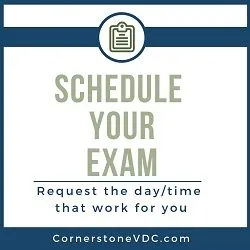What is vision therapy?
Vision therapy is a set of exercises and therapies prescribed by our optometrists that are designed to help the eyes learn to work together and process visual information better. Vision therapy focusing on training both eyes to move together, track smoothly, align accurately, and adjust vision clearly so correct visual information is being taken in. Next vision therapy focuses on strengthening visual-neural pathways in the brain for better visual processing, fine-motor control, and visual memory.
What is vision therapy like?
During vision therapy, you will work with our vision therapists in-office and complete doctor prescribed therapeutic activities. Each session is tailored to meet the individual visual needs of a patient. Sessions are scheduled 1-2 times per week and last 45 minutes to a full hour. Our treatment plans are designed to continue until visual processing problems show improvement.
What is the purpose of these vision exercises?
Vision exercises are designed to help patients improve basic visual skills that connect the eyes with the brain. These exercises can improve visual efficiency by changing how a patient interprets images. This helps them see and understand images correctly.
What can vision therapy treat?
Many vision problems do not require surgery for correction. In these situations, vision therapy is typically an option. Vision therapy is a form of physical therapy used on the eyes and brain. It is designed to resolve vision problems that can contribute to learning disabilities.
Vision therapy treats a range of eye coordination and visual-neural problems that make learning, reading, and daily life difficult. Specifically, vision therapy can treat amblyopia (lazy eye), strabismus (crossed eyes), convergence insufficiency (inability to turn eyes to look near), oculomotor dysfunction (eye movement problems), visual perceptual problems (problems with eye and brain connection), problems due to traumatic brain injury like concussion or stroke.
What is visual processing & perception therapy?
Therapy that focuses on visual processing and perception can assist patients in enhancing visual discrimination (the ability to visually see differences between objects), visual figure ground (the ability to separate an object from a background), and visual memory (the ability to retain visual information over a period of time).
What is sensory learning?
Sensory integration therapy is often combined with visual therapies in order to produce more effective results. Sensory therapies involve using other senses, such as taste, smell, touch, and hearing to corroborate with visual integration.
What is syntonic phototherapy?
Syntonic phototherapy, or light therapy, is an advanced type of visual therapy that involves using specific light frequencies through the eyes to treat a variety of visual dysfunctions.
Do these exercises simply strengthen eye muscles?
Nothing about vision therapy is centered on strengthening eye muscles. These muscles can be strengthened through orthoptics if they need strengthening. This therapy is all about improving vision problems that may interfere with learning by strengthening the neurological pathways between the eyes and the brain.
Is there scientific evidence that it really works?
Vision therapy works! Studies on vision therapy show it is effective in improving the lives of patients. Data shows that this therapy can improve visual function enough to keep it from interfering with a patient's ability to absorb information and learn. In its own sphere, this therapy is as effective as physical therapy or occupational therapy. Read about vision therapy research.
Schedule Your Full Vision Exam

Our comprehensive exam can reveal hidden vision problems behind frequent headaches, reading/writing struggles, and blurred or double vision. We want to help you see better so you can live better.
We will test for eye health, acuity (ability to focus at a distance), convergence (ability to turn eyes together), eye pursuits/saccades (eye movement ability), accommodation (ability to make vision clear), and visual processing (the connection between the visual system and the brain).
